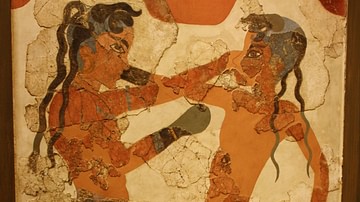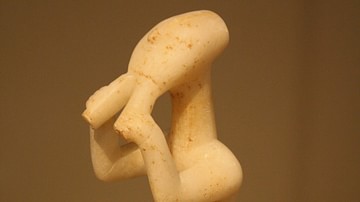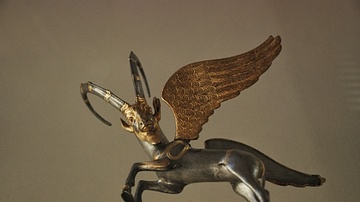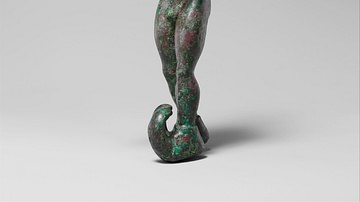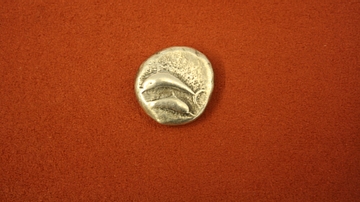Illustration
A gold ibex figurine from Akrotiri on Thera (Santorini), 17th century BCE. The figurine was discovered in 1999 CE in mint condition having been originally placed inside a wooden box within a clay chest. It is hollow and was made using the lost-wax technique. The legs, neck and tail were soldered on and finishing touches were added using a small hammer, indentations from which remain visible. (Museum of Prehistoric Thera).
About the Author
Cite This Work
APA Style
Cartwright, M. (2013, July 29). Gold Ibex, Akrotiri. World History Encyclopedia. Retrieved from https://www.worldhistory.org/image/1358/gold-ibex-akrotiri/
Chicago Style
Cartwright, Mark. "Gold Ibex, Akrotiri." World History Encyclopedia. Last modified July 29, 2013. https://www.worldhistory.org/image/1358/gold-ibex-akrotiri/.
MLA Style
Cartwright, Mark. "Gold Ibex, Akrotiri." World History Encyclopedia. World History Encyclopedia, 29 Jul 2013, https://www.worldhistory.org/image/1358/gold-ibex-akrotiri/. Web. 11 May 2025.

